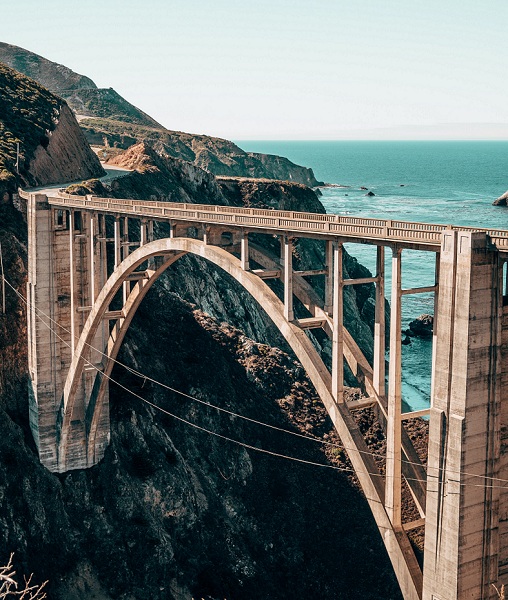The evolution of clinical research traverses a long and mesmerizing journey. From the first recorded trial of legumes in biblical times to the first randomized controlled of trial of streptomycin in 1946.
The history of clinical trial covers a wide variety of challenges – scientific, ethical and regulatory. The UK Medical Research Council’s (MRC) trial of patulin for common cold in 1943 was the first double blind controlled trial.
The journey moves from dietary therapy – legumes and lemons – to drugs. These were followed by changes in regulatory and ethics milieu.
562 BC – 1537: Pre-James Lind Era:
605
BC Book of Daniel:
The world’s first clinical trial is recorded in the “Book of Daniel” in The
Bible. During rule of King Nebuchadnezzar
in Babylon, he ordered his people to eat only meat and drink only wine, while
he allowed vegetarians to eat legumes and water — but only for 10 days. When
the experiment ended, the vegetarians appeared better nourished than the
meat-eaters. The king endorsed legume lovers to continue
their diet.
500 BC The Hippocratic Oath: Hippocrates
is called father of medicine and he was a founder of Hippocratic School of
Medicine. He established medicine a separate profession and credited with
coining Hippocratic Oath. By taking it, physicians and other healthcare
professionals affirm to practice medicine justly and ethically.
1537: Ambroise Pare in 1537 was responsible
for the treatment of the battlefield wounded soldiers. As there was
insufficient amount of oil as needed, He was constrained to apply digestive
made of yolks of eggs, oil of roses and turpentine in place of oil for battlefield
wounded soldiers. He found those to whom he had applied the digestive
medicament feeling but little pain, their wounds neither swollen nor inflamed,
and having slept through the night. This is an example of accidently performed
comparative trial.
1747:
James Lind and Scurvy Trial: He planned a comparative trial of
the most promising cure for scurvy.
On May 1747, he selected twelve patients in the scurvy. They lay together in one
place, he gave diet common to all. The consequence was that the most sudden and
visible good effects were alleged from the use of oranges and lemons.
1800: Arrival of
Placebo: Hooper’s Medical Dictionary of 1811 defined it as “an epithet
given to any medicine more to please than benefit the patient.” However, it was
only in 1863 that United States physician Austin Flint planned the first
clinical study, he treated 13 patients suffering from rheumatism with an herbal
extract which was advised instead of an established remedy. In 1886, Flint
described the study in his book A Treatise on the Principles and Practice of
Medicines“This was given regularly, and became well known in my wards as the
‘placeboic remedy’ for rheumatism. The favorable progress of the cases was such
as to secure for the remedy in general the whole confidence of the patients.
1887 National Institute of Health (NIH)
Founded: the National
Institute of Health was founded by Joseph J. Kinyoun. Today the NIH is the
largest source of funding for medical research in the world, investing $30.9
billion annually to support scientific discovery.
1906 FDA Pure Food
and Drug Act: President
Theodore Roosevelt signed the FDA Pure Food and Drug Act into law, which
regulated that products could not be sold for indications outside the labelling
and prohibited interstate transportation of unlawful food and drugs.
1928 Sir Alexander Fleming Discovers
Penicillin: Alexander
Fleming’s cluttered and untidy
lab
yielded one of the most important discoveries in the history of medicine as
Penicillin
which was identified on mould growing on a stack of staphylococci cultures. Penicillin
was the most efficacious life-saving drugs in the world for the treatment of bacterial infections.
1932-1972:The
Tuskegee Syphilis Study: The US Public Health
Service conducted studies on 600 (including 201 control) subjects to study the
effects of syphilis. Subjects did not provide informed consent and were denied
access to Penicillin, a proven treatment for syphilis.
1937 Elixir Sulfanilamide Disaster: Chief chemist, Harold Cole Watkins, liquefied the drug by dissolving it in the toxic compound diethylene glycol, but failed to test the compound for toxicity since this was not a requirement at the time. Over 100 patients died after consuming Elixir Sulfanilamide.
1938 Federal Food, Drug and Cosmetic
Act: Following the
Elixir Sulfanilamide disaster, 1938 Federal Food, Drug and Cosmetic Act passed
by the U.S. Congress which required proof of safety before the
release of a new drug.
1939-1945 World War II Experiments: Prisoners were subjected to hazardousexperiments with the goal of developingnew weapons, to aid in treating injuredGerman soldiers, and to advance their eugenic racial ideologies.
1943: The First
Double blind Controlled Trial – Patulin for Common Cold: The Medical
Research Council (MRC) UK carried out a trial in 1943-4 in order to investigate
patulin treatment for (an extract of Penicillium patulinum) the common cold.
The study was carefully controlled by keeping the physician and the patient
blinded to the treatment. The outcome of the trial was unsatisfactory as
the analysis of trial data did not show any protective effect of patulin.
1944 Multicenter Studies: For the first
time, trials were conducted at different sites using the same protocol, with
all the centers’ results assessed together. This finally allowed for larger
numbers of participants and a wider range of population groups to be studied, which
strengthens research trial designs and analyses.
1944-1974 Human Radiation Experiments:
During the War, thousands of U.S. citizens became the innocent and unknowing
victims of over 4,000 secret experiments sponsored by the U.S. government with
the aim of determining the effects of atomic radiation on the human body, often
using doses likely to harm the subjects.
1946 First Randomized Curative Trial – Randomized Controlled Trial of the Streptomycin:The first randomized control trial of streptomycin in pulmonary tuberculosis was carried out in 1946 by MRC of the UK. Determination of whether a patient would be treated by streptomycin and bed-rest (S case) or by bed-rest alone (C case) was completed by the reference to a statistical series based on random sampling numbers drained up for each sex at each centre by Professor Bradford Hill.
1947 Nuremberg Code: This Code
established the requirements for informed consent, absence of coercion,
properly formulated scientific experimentation, and beneficence towards experiment
participants
1948, Universal Declaration of
Human Rights:
Universal Declaration of Human Rights (adopted by the General Assembly
of the United Nations) expressed concern about rights of human beings being
subjected to involuntary maltreatment.
1951 Henrietta Lacks: During
treatment for cervical cancer, cells were taken from her tumor without her
knowledge. Researcher George Otto Gey took these cells and noticed that, amazingly,
the cells could be kept alive in culture. while the extraction of Henrietta’s
cells, some 20 tons of cells have been grown from the HeLa line and were used
to test the first polio vaccine in the 1950’s and have since been used for AIDS
and cancer research.
1960’s Harvard Psilocybin Experiments: Two of his
professors,Timothy Leary and Richard Alpert gave the psychedelic drug
psilocybin to students and prisoners as part of a hypothesis that the then-legal
drug could alter behavior in dramatic and beneficial ways. Due to the
controversy and an article published in Crimson in 1962 they were dismissed by
the university.
1962 Kefauver-Harris Drug Amendment:
It strengthened federal oversight of drug testing and included a
requirement for informed consent.
1964 Declaration of Helsinki:
Helsinki, the World Medical Association articulated general principles and
specific guidelines on use of human subjects in medical research, known as the
Helsinki Declaration.
1974 The National Research Act: .
For the Tuskegee Syphilis Study, President Richard Nixon signed the National
Research Act into law.The act requires that all research using human subjects
be reviewed by an Institutional Review Board as another step to ensure
protection of human subjects.
1974 FDA Bureau of Medical Devices and Diagnostic Products: In February 1974, the FDA created the Bureau of Medical Devices and Diagnostic Products, this led to Advancements in technology for the significant growth in the medical device field.
1976 Medical Device Amendments: President
Gerald Ford signed this amendment into law in order to increase FDA’s authority
over the production of medical devices.
1979 The Belmont Report: The
Belmont Report explains the three unifying ethical principles to guide human
research: Respect for persons, Beneficence,and Justice.
1981 FDA Regulations Title 21: In follow-up to the Belmont Report, FDA and the Department of Health and Human Services formally revised regulations for human subject protections by creating Title 21, which includes regulations for the Protection of Human Subjects (Part 50), Financial Disclosure (Part 54), IRBs (Part 56), Investigational New Drug Applications (Part 312), Investigational Device Exemptions (Part 812), and Electronic Records (Part 11).
1990 International Conference on Harmonization Guidelines: Many European nations creating plans for global harmonization of regulatory requirements to reduce duplicate, time-consuming, and expensive procedures needed to market products internationally, while maintaining safeguards on quality, safety, and efficacy. This need led to the creation of the ICH guidelines in April of 1990.
1990 The Safe Medical Devices Act: The
Safe Medical Devices Act brought about requirements for hospitals and health
professionals to report incidents to the FDA and manufacturers when devices
cause serious injury or death.
1991 The Common Rule: Captured in the Code of Federal Regulations, Title 45, Part 46, the rule Consist of description related with the types of research subject to regulation.
1993 MedWatch: MedWatch was
launched by the FDA as a system designed to collect health professionals’
reports of adverse events involving medical products. When safety hazards are
detected, the FDA issues medical product safety alerts or orders product recalls,
withdrawals, or labelling changes to protect the public health.
1996 Health Insurance Portability and Accountability Act: This Act requires that patients must be informed about, how their protected health information will be stored and kept confidential when they participate in a research trial.
1996 National Bioethics Advisory Commission:This was created to explore ethical issues in science and medicine and advise the President on bioethical issues. The commission examined topics including cloning, human stem cell research, and research involving human subjects
1996 The World Health Organization Guidelines for Good Clinical Practice: The guideline deal with the justifications for a trial and protocol; protection of subjects; responsibilities of investigators, sponsors and monitors; assurance of data integrity and product accountability; and roles of regulatory authorities. http://cdn2.hubspot.net/hub/149400/file-410979295-pdf/docs/CRT_Timeline_download.pdf
https://www.ncbi.nlm.nih.gov/pmc/articles/PMC3149409/











